Mike Mentzer was one of the greatest bodybuilders of his era.
He won the 1978 Mr. Universe contest with the first and only perfect score in history.

He also won or placed high in many other Pro contests, including 1st in the Heavyweight division and 2nd Overall in the 1979 Mr. Olympia.
Other than his phenomenal success in competition, the unique thing about Mike was his training system. While all the other top bodybuilders were training for 2 hours a day, 6 days a week, Mike was only training for 45 minutes, 4 days a week.
Mike was the first guy who, through his writing, got me excited about high intensity, low volume strength training. I was in my early twenties at the time, frustrated by my lack of progress training 6 days a week with multi-set workouts.
So I bought his course, talked a friend of mine into trying it with me, and followed it exactly as written for 4 months.
And during that 4 months I reduced my weekly training time by 75%, and gained 16 pounds of muscle while maintaining single-digit percentage of body fat.
And I’ve continued using, teaching, researching, testing, and refining the high intensity/low volume approach to strength training ever since.
Mike retired from bodybuilding in the ’80’s, left the scene for a while, then resurfaced in the ’90’s as a trainer.
And in April of 1996, I flew out to Gold’s Gym in Venice, California so I could go through a chest and back workout personally supervised by Mike.
We started with the chest workout, which consisted of a set on the Nautilus 10 degree chest fly, followed immediately by the incline chest press.
According to Mike, the fly would isolate the pecs; the incline press would then utilize the fresh muscles of the shoulders and triceps to push the pecs to a deeper level of fatigue.
Mike believed it was essential to begin the second exercise as quickly as possible after completing the first, as even a 3 second delay would compromise the effectiveness of the superset. I was about to find out just how serious he was about that.
So we started with the chest fly. Mike made sure I moved the weight slowly, under control, with no momentum involved, getting a good “squeeze” in the finish position.
When I reached failure and couldn’t move the arm pads any more, Mike helped me get the weight into the finish position and had me perform a “static hold”.
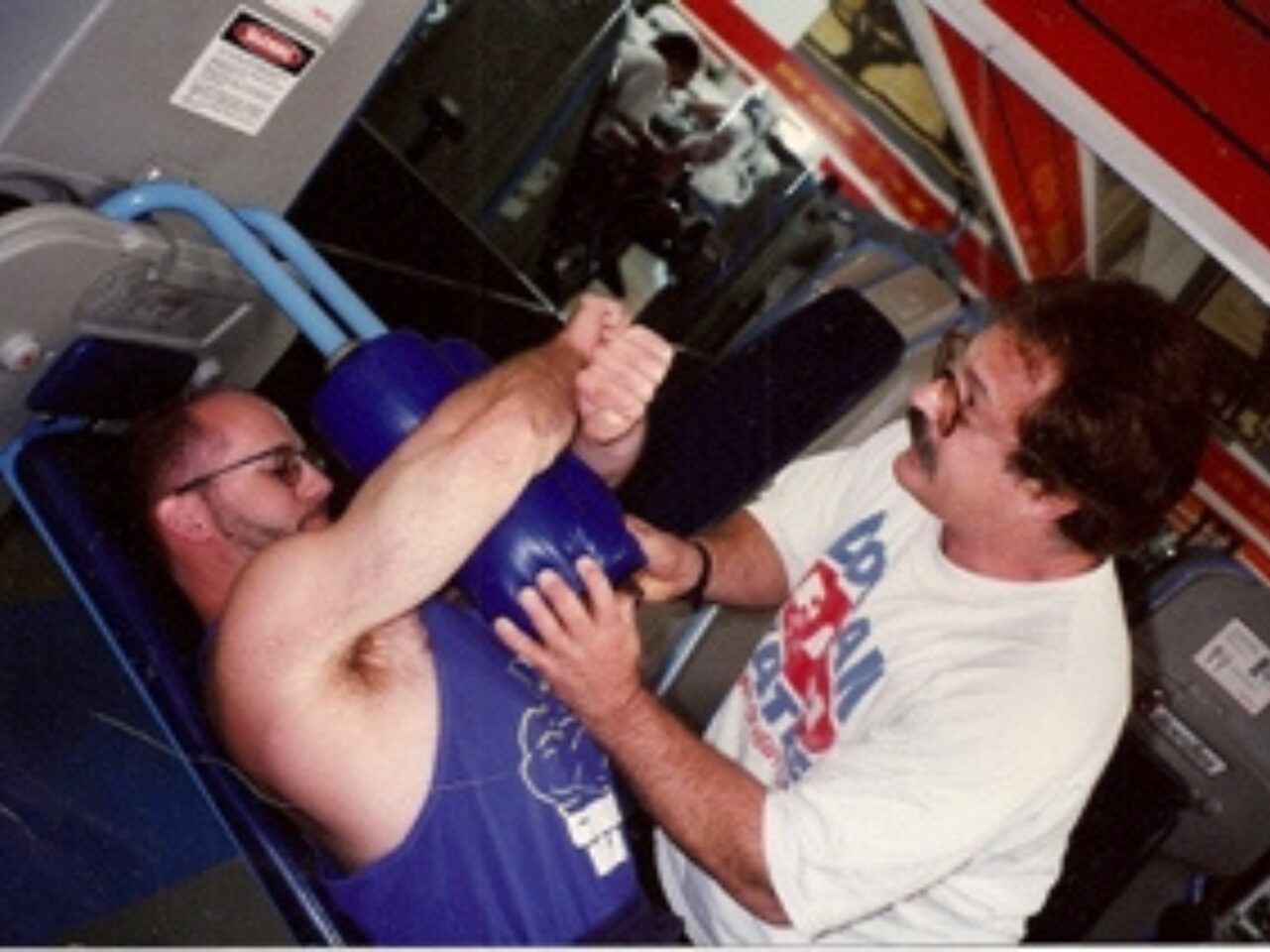
A static hold meant I would squeeze the arm pads together for as long as I could; when they came apart due to my fatigue, I would continue to try to hold them as close together as I could, until inch by inch they ended up back in the start position with the weight stack touching down. This would cause additional growth stimulation by tapping into my static and negative strength levels.
As it turned out, he wasn’t satisfied with first static hold rep I did, so he reduced the weight a little and made me do it again. He said he wanted to make sure I really understood the concept and got a feel for how to do it correctly, and I was very appreciative of that (though at the time, my chest muscles were NOT 😂).
The moment the weight stack came together, Mike helped me out of the machine, yelled “LET’S GO!” and literally started sprinting to the incline press, located in the next room.
I’m just glad nobody got in our way, because I have no doubt Mike would have leveled anyone who was in our path.
Once we got to the incline I immediately sat down, positioned myself as I had been instructed, and pushed as hard as I could. The weight felt like a ton, and seemed to take forever to get to the finish position.
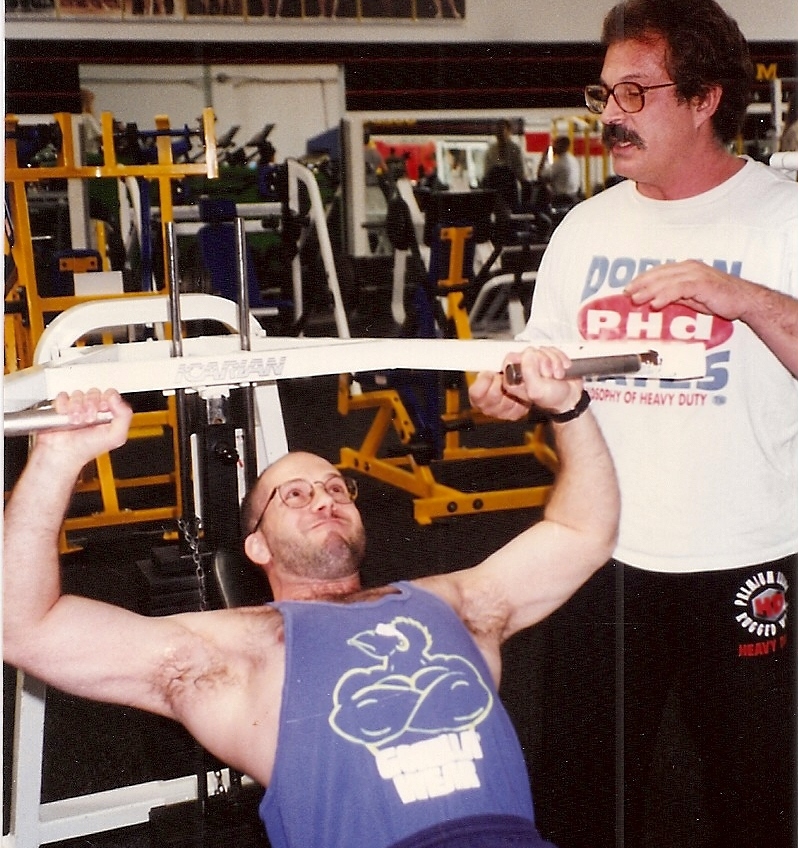
I heard Mike say, “perfect weight selection”. (Easy for you to say, Mike.)
I found out later that the rep range on that exercise was 1-3 reps. Mike felt that since this was the second exercise in the pre-exhaustion superset, there was no point in extending the duration of the set, so the weight should be ultra heavy.
Trust me, it was. I got one rep on my own, and then one forced rep with Mike’s assistance, at which point I was convinced I was done.
I let go of the handles, and Mike adjusted the height of the handles upward and told me to do as many reps in this small range of motion as possible.
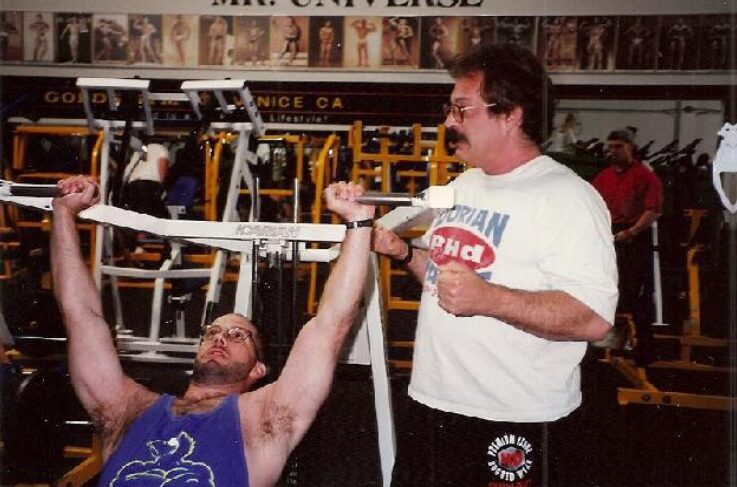
Mike called these “strongest range” reps. He explained to me later that the last 15 degrees or so of range of motion on pressing movements provides the least resistance, due to favorable leverage factors.
This can be used to advantage at the end of a set, when a full range of motion is no longer possible. Squeezing out a few reps in this small range totally exhausts any remaining strength available on that exercise, allowing you to safely get closer to total failure.
After a few of those, my chest, shoulders and triceps were smoked. The whole thing probably took all of five minutes.
Now it was time to work the back, so we made our way over to the pulldown machine, also located in the third room.
Once we got there, I noticed Mike was looking at me kind of funny. He said “you look a little pale. Go walk around for a few more minutes”.

I was so super-motivated working out with him, and so intent on doing my best, that I had pushed myself to the point of almost passing out!
After a couple minutes I was ready and anxious to continue. I stood before the pulldown machine, and Mike explained this would just be one set to failure-no pre-exhaustion superset (which was fine with me!).
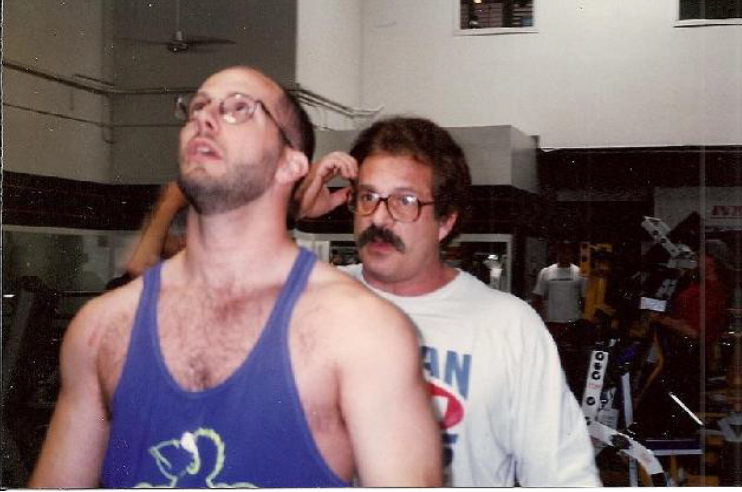
I took a narrow, underhand grip, sat down, and began my set of slow, controlled reps. After several reps I reached the point of failure, where I couldn’t pull the bar under my chin any more. At that point I stood up and re-racked the weight.
As I stood in front of the machine huffing and puffing, Mike said “reset yourself psychologically for a static hold”.
After about 10 seconds I grabbed the bar again, sat down, and pulled it down to my collarbones and “locked it in” there. I held it for as long as I could, fighting every inch of the way back to the starting position as my strength gave out.
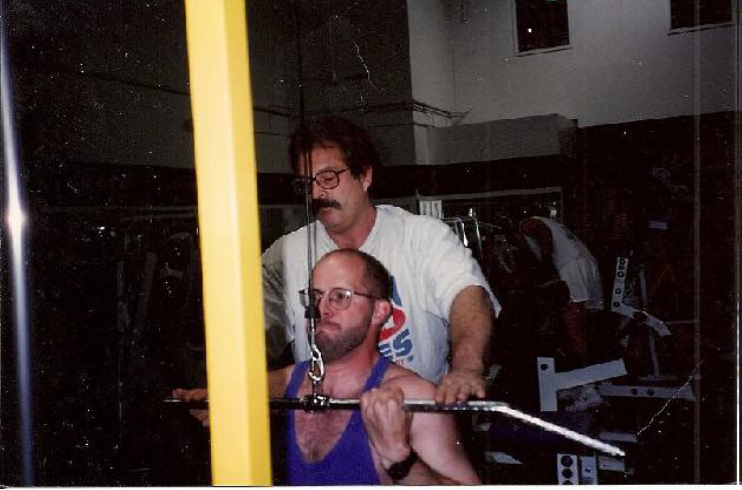
My lats, rear delts and biceps were toast.
We moved on to shrugs, my final exercise for the day. We proceeded to a plated-loaded shrug machine, where you stand in between the handles and load barbell plates on to the machine in front of you (sort of like a wheel barrow).
Once the machine was loaded up, I got into position, lifted the handles and started shrugging. Mike really emphasized getting a full contraction at the height of the movement. “Shrug your shoulders up to your ears, then squeeze it up another fraction of an inch,” he urged.
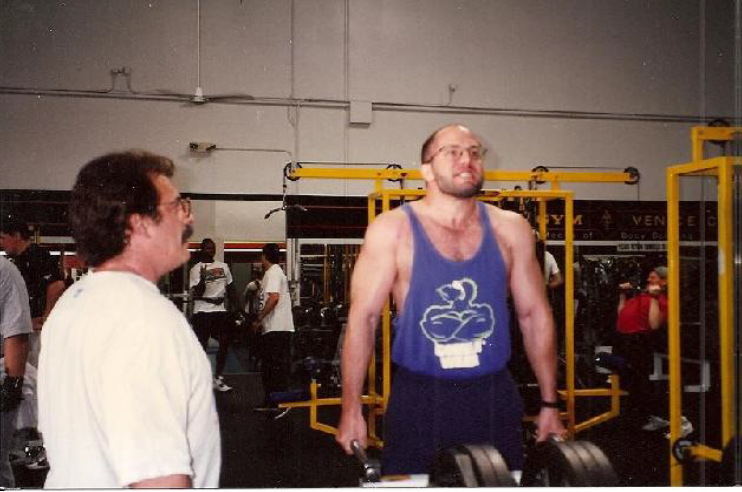
As with the pulldown, I finished the set at the point of failure, then rested a few seconds and performed one last static hold.
And with that the workout was over.
I distinctly remember my arms being numb from the elbows down, and my whole upper body felt swollen. There was no doubt I had activated untapped muscle fibers, and stimulated new growth.
As we walked out of the gym together, Mike turned to me and said, “today you learned something about intensity”.
He was sooooo right!
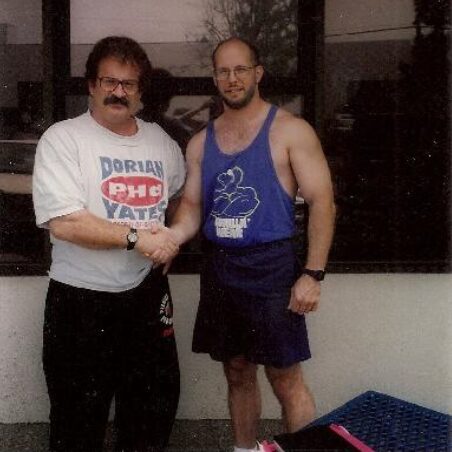
*********************************************************************************
Tragically, Mike passed away on June 10, 2001 from heart disease. The memories of my experience with him stay with me and motivate me in my training to this day.
Mike Mentzer not only taught me how to train, but also how to think, and apply the lessons learned in training to the rest of my life: to analyze situations with logic and reason, make a plan first, apply the plan with 100% intensity, and reflect and adapt until the goal is ultimately achieved.

He also encouraged and inspired me with my writing, which led to the creation of Strength After 50, and most recently my advanced training program, Ageless Strength Mastery.
He is missed, but the lessons live on.

2 Comments. Leave new
Congratulations on the wonderful article and the story told with the Great Mike Mentzer.
The principles that he preaches can be followed, but it is very difficult to strictly do this type of training in commercial fitness centers. The reason is that you can very rarely find two free machines on which you can perform a super set for the corresponding muscle group. But still, we are over 50 and even one set of a single exercise in his style would be quite enough. Which is actually always preached here.
Thank you Dydo, glad you enjoyed the article! I agree with your comments 100%, it’s hard enough to find one free machine in a crowded gym these days, let alone two. But like you, I believe one set performed properly is enough, especially when using the advanced techniques described in this article. Best wishes with your training this year!